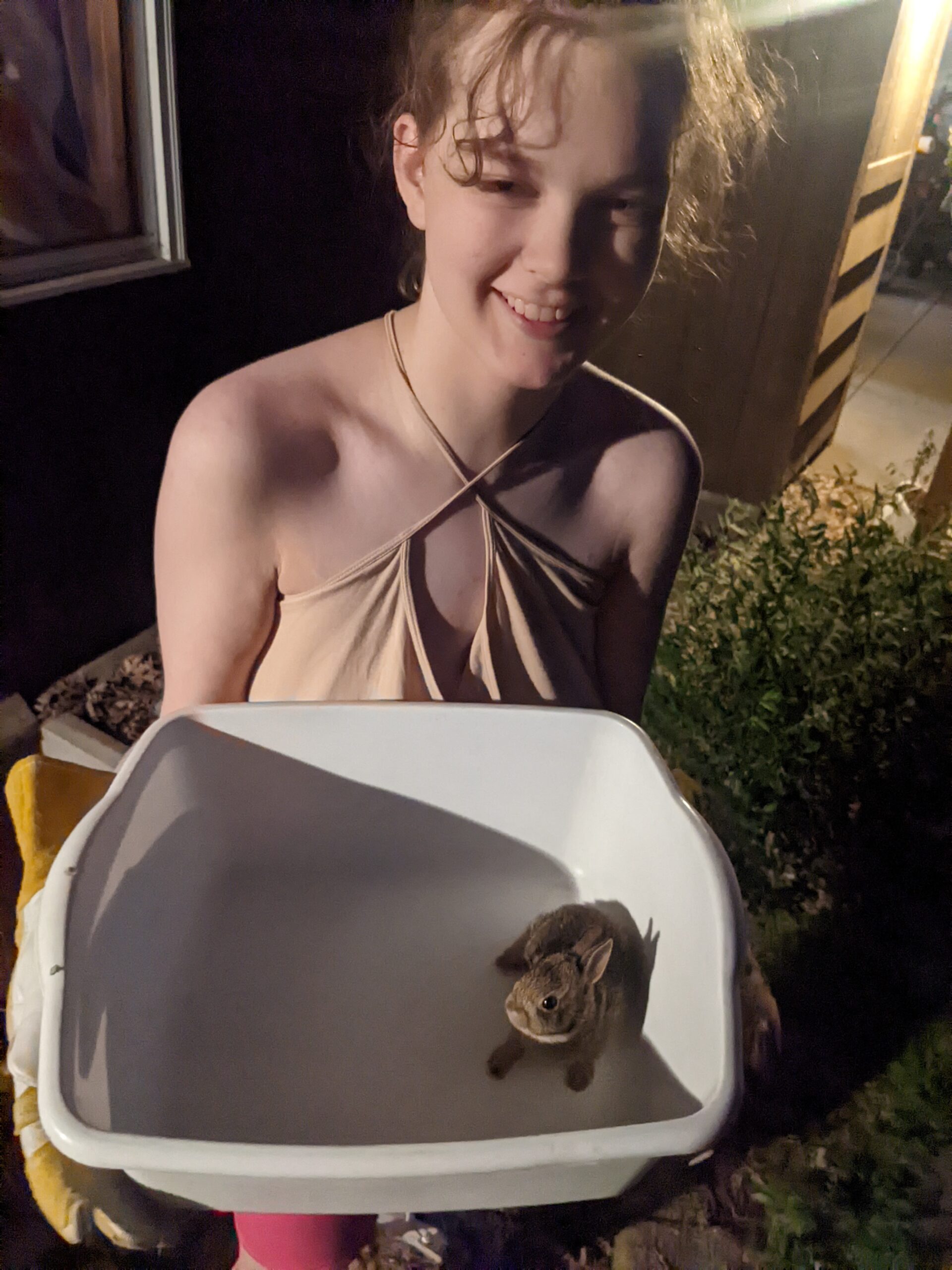Before and after photos. Stop-motion progress movies. The hero’s journey. Creation myths. Rug-cleaning videos.
All of these things have a common element: narrative progression. Sometimes it’s implied, like in the photo attached to this post. Why is a kid holding a baby bunny in a dish pan in the dark? Sometimes it’s explicit, like in a photo montage of a baby taken every week. We crave purposeful movement in how we frame the world.
What is the root cause, what are the contributing factors? That’s us trying to find the start of a story so we can tell it in order and understand it.
There are stories that aren’t about growth, or forward motion, or line goes up, but they’re harder to tell and harder to understand.
So you want to tell a story
When you’re writing a talk, or a blog post, or a release note, you want to capture a few things so that you can attach your information to this narrative impulse. The way you write this may be different than the way you tell it, but we’ll get to that.
Set the scene
Who are you? Why do you know about this? Who are you talking to? Why do they care?
This part is to help you make sure you understand what story you’re telling, and who you’re telling it to. You can put as much as you want in here, since a lot of it won’t end up in the talk. You still need it to help you find the core of the story. Think about going to the doctor, and they tell you that everything is normal except this one thing. Neither of you is going to pay much attention to the normal things, it’s all about the exception. But without knowing everything is normal, the exception is not… exceptional.
Why your audience cares about something is probably not at all the same reason you care about it, so you need to think about what they’re dealing with, and why they find it hard, and what their internal story about it is.
Find the conflict
Why is progress hard? Sometimes it’s just that time is slow. All things being equal, the bean seed will become a bean sprout and we can watch it pop out of the soil. That’s not a lot of conflict, so we speed up the time scale to make it exciting. Sometimes there are a lot of things to overcome – corporate inertia, or active opposition, or legacy systems. In that case, we talk about what was hard and how we got through it.
Write the win
In this story you’re telling, what was the win? How do you know you made progress, what got better? You’d think this would be obvious, but a lot of people write the story of their struggle and don’t actually tell us about the victory. Be sure you circle back to the scene you set and show the progress or improvement.
Now shake it all up
We’ve all listened to boring stories, where we start at the beginning and go on through to the end without knowing whether we want to be listening to this. The trick to telling a story is to tell people what reward they are going to get for following the story up front, so they are incentivized to follow along. That’s the psychology behind all the headlines that are like “One Weird Trick to Win Friends” and “Eight Things You May Not Be Cleaning Right, Number 7 Will Surprise You”. I guess it’s actually the psychology behind having headlines at all. It’s the payoff of the story up front, and the rest of the story is there to add context, detail, and complexity.
Start your story with either the win, or a really good mysterious question, but not the beginning of the story. Then you can go back to the beginning and start laying out how the win is going to happen. Or you can work backward from the win to see all the things that contributed to it.
Caveats
Of course there are a lot of other structures that work. I’m just describing this one because it’s the easiest to teach, and most general. I have seen great talks that were totally sequential, and read great stories where almost nothing happened. But in general, your talk or post or story will go better if you have a surprising start to listen to, and a progression about how you got there. You can see at the top of this post that I mentioned rug-cleaning videos, but never brought them up again. But if you go look at one, you’ll see that most of the thumbnails are neither wholly clean nor wholly dirty. You want to see the clean rug emerge, and you have been promised it’s under all that mud.

